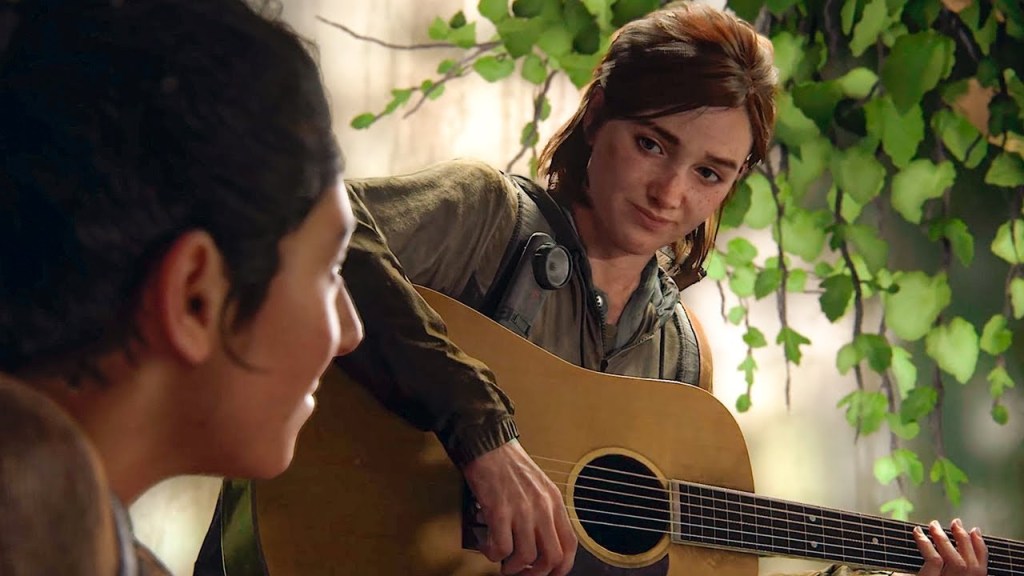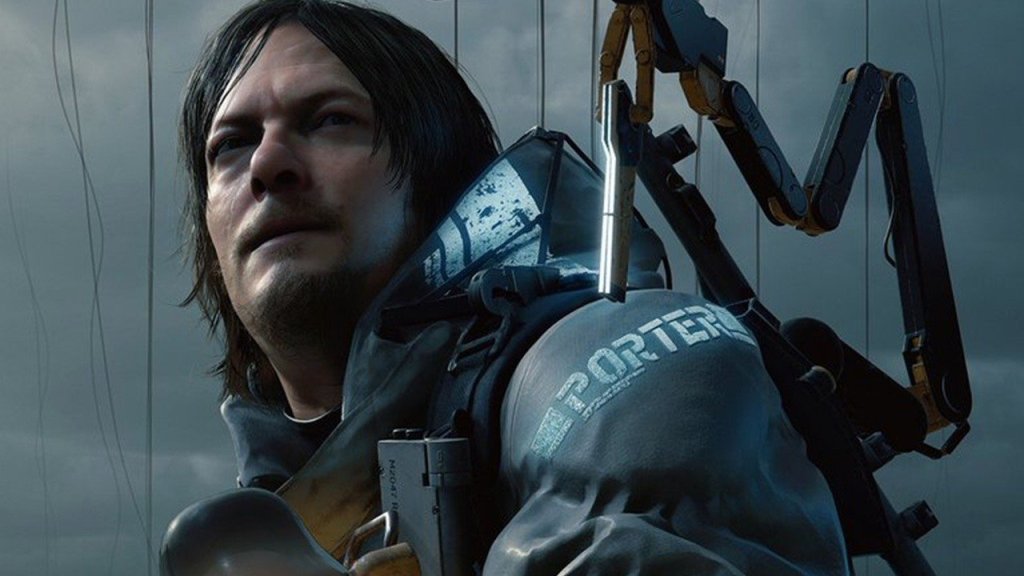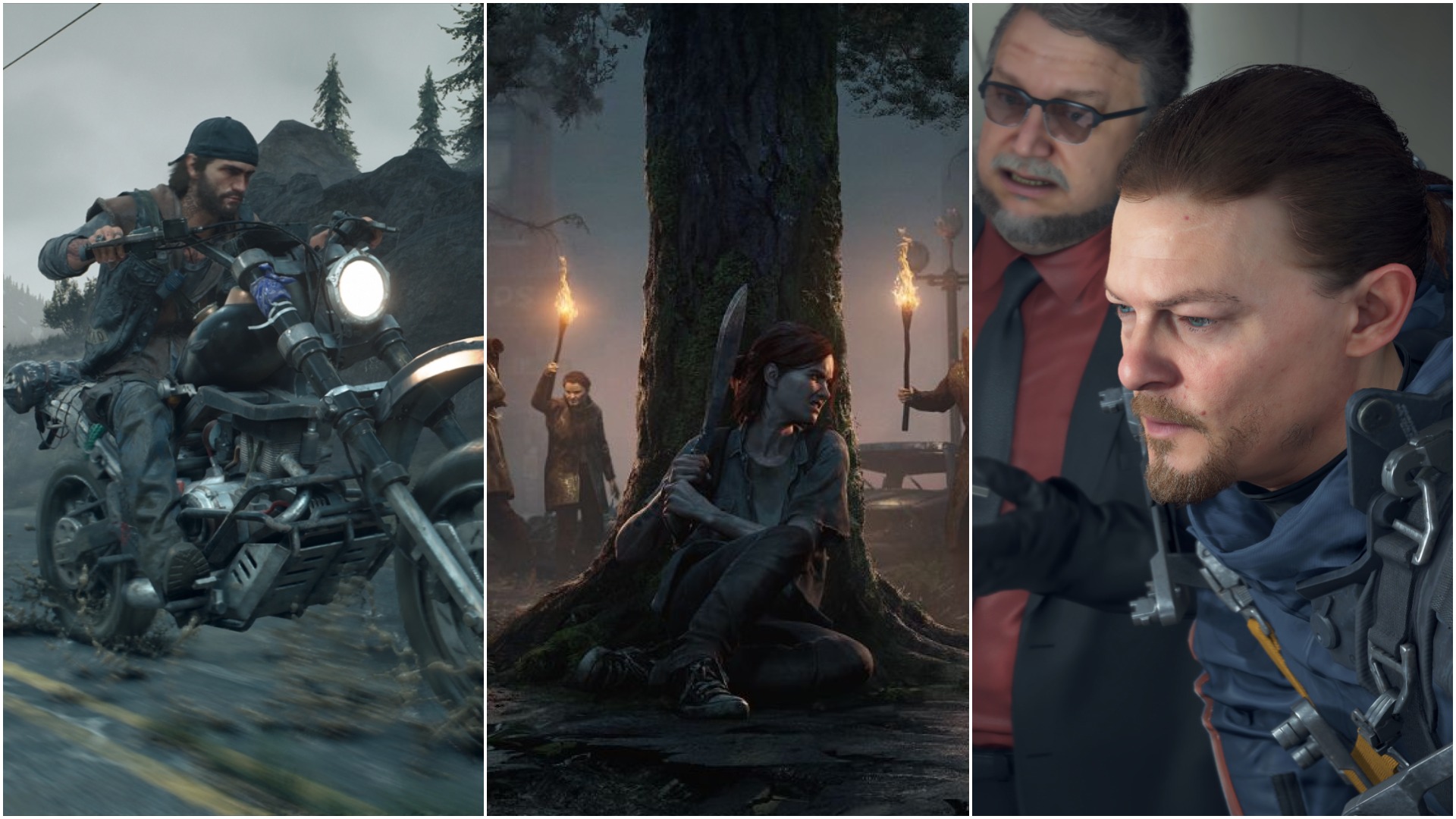The PlayStation 4 will go down as one of the most successful video game consoles ever made. While its success can most easily be measured in sales figures (over 113 million units sold so far), most gamers will likely best remember the PS4 for its incredible library of games, which includes critically-acclaimed exclusives Bloodborne, Uncharted 4, God of War, Horizon Zero Dawn, and Marvel’s Spider-Man.
In that same library, though, are a few games which some PS4 owners will ultimately remember differently than others. That’s obviously normal, but what is somewhat unusual is how the PS4’s three most divisive console exclusives each reveal a key component of how Sony won the PS4/Xbox One console war in terms of hardware sales and how the company will look to continue its success into the PS5/Xbox Series X generation.
You may love them or you may hate them, but each of these three PS4 exclusives tell us something important about the console’s legacy.

Days Gone
For the most part, I found Days Gone to be glitchy, uninspired, and, at times, poorly written to the point of parody. It was a game I really wanted to like but ultimately felt was a solid rental rather than a particularly impressive entry into an otherwise stellar collection of PlayStation exclusives. I honestly didn’t suspect that there would be many fans who would disagree strongly with that assessment once the game was released a couple of days later.
However, that’s pretty much exactly what happened as exemplified by the noticeable difference between the game’s user and critic scores. The divide between critics and users over Days Gone reignited an already heated debate about the review process, expectations, allegiances, and what some see as a cultural divide between critics and the “average gamer.” Days Gone is still considered to be one of the centerpieces of that debate.
What was the source of that divide? It never comes down to any one factor, but when I think back on the wildly different reactions to Days Gone, I think about what Sony accomplished with its games during the PS4 generation.
Many of the PlayStation 4’s best exclusives — including God of War, Marvel’s Spider-Man, Horizon Zero Dawn, and Ghost of Tsushima — feature a fairly similar design scheme. That is to say that each of them has an open world (or large world) that features RPG-lite character-building elements, a variety of main and side objectives, and strong character-based stories that encourage you to finish the single-player campaign. It’s essentially an evolution of the open-world action-adventure style that Ubisoft has popularized in the last decade, though it’s really more complex than that.
The fascinating thing about Sony’s increasing reliance on this basic formula is how various PlayStation first-party studios have found ways to make it feel unique to their games. Each of the titles I mentioned above has its own distinct personality, art direction, tone, and some kind of unique mechanic that separates it from the rest of the exclusives library. While it’s a little odd that God of War allows you to improve Kratos strength through equipment given that he has god-like strength in the first place or that Peter Parker is still discovering so many significant abilities so late into his career, PlayStation’s first-party developers have typically done a very good job of expanding on the formula.
That’s the strange thing about Days Gone. It’s certainly not devoid of personality — many fans fell in love with its Sons of Anarchy meets The Walking Dead cinematic style — but it often feels like the purest distillation of that “open-world game with RPG-lite elements and a variety of objectives” idea. You would think that the familiarity of its gameplay and zombie apocalypse premise wouldn’t really “inspire” people, yet many gamers passionately praised Days Gone for the way it let them play out a robust Walking Dead-esque scenario while giving them more of that beloved PlayStation formula.
That’s possibly the biggest takeaway from Days Gone divisive legacy and its ultimate success. A glance at the game’s engagement infographic shows that there really does seem to be a sizable number of gamers out there who have bought into the PlayStation formula and will perhaps even overlook a game’s flaws for the chance to dive into a bountiful experience that feels both new and familiar.
That’s not to say that there aren’t qualities unique to Days Gone but rather that a sizeable portion of the game’s most vocal defenders focus on the PlayStation experience it represents and the fact that in a realistic scenario where most gamers only get to dive into a certain number of games a year, Days Gone has a lot to offer.
During the PS4 generation, Sony invested heavily in a particular design formula. Days Gone suggests that it paid off.

The Last of Us Part 2
Shortly after its release The Last of Us Part 2 became the poster child for many of the most notable controversies of this console generation.
The pathetic blowback over The Last of Us Part 2’s LGBTQ representation reminded us that this was the era that saw the rise of the Gamergate alt-right movement and the toxic culture of bigotry it fueled. Meanwhile, the debate over the game’s relationship between interactivity and storytelling echoed a divide we’ve seen in discussions over so-called walking simulator games. Even the disagreements over the game’s subversive storytelling bring to mind certain discussions about whether creators have an obligation to please fans of a franchise.
But if you’re talking about what The Last of Us Part 2’s divisive nature tells us about the PlayStation 4’s legacy, then the most interesting talking point may be the scope and nature of the game’s development process and what it says about Sony’s commitment to its first-party partners.
The Last of Us Part 2 was in development for over 6 years, a period which included numerous delays and reportedly quite a bit of crunch. It allegedly cost over $100 million to make, and it doesn’t even feature a multiplayer mode, the seasonal DLC content most gamers have to expect from AAA releases, or any post-launch microtransactions. In many respects, it is not the kind of game that most major publishers pursue in the modern era.
Sony Interactive Entertainment isn’t most publishers, though. With games like God of War, Horizon Zero Dawn, and The Last of Us Part 2, we’ve seen the publisher reward its most notable first-party studios not only with large production budgets for single-player epics but what seems like complete trust and cooperation. It’s a strategy which brings to mind the message that Sony sent early into the PS4’s lifecycle: this console is about games.
It’s entirely possible that you didn’t like The Last of Us Part 2. I ended up feeling decidedly mixed about the game. Yet, part of the reason that the PS4 was so successful is that the console boasted a lineup of exclusives that often bested AAA offerings from Activision, EA, or Ubisoft but were less focused on the monetization schemes that often plague games from those other publishers. Sony instead invested in a stable of first-party developers that could deliver compelling experiences you couldn’t get anywhere else but on PlayStation.
At the same time, the perceived bloat of the AAA development scene, the sometimes absurd amount of money being pumped into the production of such titles, and the way that both of those elements negatively impact the corporate culture of major studios all raise serious questions about the full value of development processes this expensive and time-consuming.
There is a fiscal and human cost to making these games that heavily suggests crunch- based development cycles are unsustainable in the long-term. If the industry does move away from this style of production, especially for a purely single-player game with little long-term monetization opportunities, then it could be some time before publishers figure out the best way to pursue making games like The Last of Us Part 2.
However, we fully expect that Sony will continue its commitment to its partners’ visions, even as we start to ask new questions about the development process.

Death Stranding
Death Stranding is a very strange game.
Much of what makes Death Stranding such an oddity stems from the mind of its infamous creator, video game auteur Hideo Kojima. Much like Naughty Dog creative director Neil Druckmann’s work on The Last of Us Part 2, Death Stranding is very much representative of the unique mind of its creator. The writing, characters, and themes of Kojima games are typically divisive, and Death Stranding’s bizarre contributions in all of those respects represent what you could call “Kojima unchained.”
The key difference between a game like The Last of Us Part 2 and Death Stranding is that Death Stranding was not developed by a first-party PlayStation studio. In fact, the game is available on PC (though it remains a PlayStation console exclusive). Furthermore, unlike other PS4 exclusives, Death Stranding doesn’t adhere to that basic gameplay design mentioned above. In fact, its gameplay, which largely emphasizes the difficulty of navigating different types of terrain and making deliveries on time, is possibly its most divisive quality.
All of that may lead you to believe that Death Stranding is too different to really teach us much about the PlayStation 4’s library and legacy. But that’s not the case. Death Stranding is really just the most recent example of how Sony’s relationship with Japanese developers and creators helped shape the PlayStation 4’s library and define its success.
It’s no secret that Sony’s relationship with Japan and the PlayStation brand’s popularity among Japanese gamers has been a key component of the company’s success over the years. Microsoft has struggled to make significant headway in that market, and Nintendo’s success doesn’t necessarily seem to noticeably cut into PlayStation’s historical sales figures. In the PS4 generation, we saw Sony build on that market success by investing heavily in notable notable Japanese-developed titles like Bloodborne, Persona 5, and Death Stranding.
Even if you put aside the regional component, Death Stranding shows us Sony’s unusual commitment to equally unusual console exclusives. Until Dawn was a choose-your-own-adventure tribute to B-horror movies made by a largely unproven studio. It was a hit. Persona 5 was a downright bizarre entry in an equally bizarre franchise — at least by conventional Western design standards. It was a hit.
Much like how Death Stranding left some gamers feeling disappointed, though, Sony’s commitment to sticking to often eclectic developers and their unusual ideas hasn’t always paid off. David Jaffe’s Drawn to Death was largely a bust, Team Ico’s The Last Guardian garnered a notably mixed reception, and Quantic Dream’s Detroit: Become Human was well-received but seemed destined to be overshadowed by the rest of the PS4’s major hits.
Whether or not the homogenization of the AAA games industry will eventually weed out games like Death Stranding remains to be seen, but based on what we’ve seen, it seems like Sony is still committed to giving games that don’t quite fit the conventional blockbuster mold a high-profile home on its platforms.
If nothing else, Death Stranding reminds us that it’s harder for a game to be controversial if it doesn’t take a chance on something. Sony took a chance with the PS4’s library and it largely paid off in the end.
